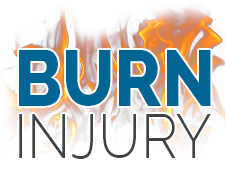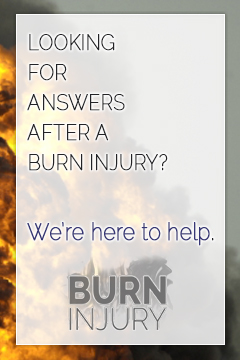Chemical Burns
A chemical burn is a type of burn that is caused by exposure to a harmful substance, such as a strong acid or base. Chemical burns differ slightly from other types of burns as they need no heat source to cause corrosion to the skin or tissues. Certain chemicals can also penetrate into tissue without obvious damage to the skin.
Chemical burns can be extremely dangerous and difficult to treat, as the removal of the source of the burn sometimes requires more extensive methods than running water over the burned area of the body. Additionally, certain substances such as mustard gas can cause chemical burns to the respiratory system when breathed in. If a patient is exposed to enough of a substance that will cause chemical burns, fatality can result.
Chemical Burn Causes
Professions such as mining, chemical fabrication, pool maintenance, and creation of medicinal substances may put workers at risk of being exposed to chemicals capable of burning the skin and body. While laws are in place to protect workers from overtly hazardous conditions, working with toxic substances carries the inherent risk of exposure to the chemicals in the event of an accident. Some types of hazardous chemicals have also been intentionally used during warfare, although the practice has been outlawed.
Substances that can cause painful chemical burns include:
- Lye
- Silver nitrate
- Hydrochloric acid
- Sulfuric acid
- Lime
- Hydrofluoric acid
- Sulfur mustard
- Vesicants
- Urticants
Chemical Burn Symptoms
Symptoms may vary depending on the type of chemical that the patient is exposed to. If chemical burns are limited to the skin, symptoms may resemble those of burns from scalding or flame burns. Rash, blistering, redness, and pain are common symptoms of a chemical burn on the skin. However, exposure to chemicals often puts the patients at risk for other types of reactions.
Common reactions from exposure to hazardous chemicals include:
- Breathing difficulties
- Abdominal pain
- Convulsions or seizures
- Headache
- Dizziness
- Vomiting and nausea
- Weakness
- Unconsciousness
Treatment of Chemical Burns
As with other types of burns, the first step to treating a chemical burn is to remove the source of the burn. If the chemical is on the skin, any visible chemical should be brushed off carefully, and then the area of the body that has been exposed should be placed under running water. If the chemical has been inhaled or is otherwise internal, the patient should seek medical treatment immediately.
After removing the source of the burn and cooling the skin, the burned area should be covered loosely. If the burns are minor, medical treatment is not required, as the burns will heal without treatment. If the burns are extensive or if the heat source is difficult to remove, the patient should be taken to a medical facility. Home remedies such as salve and ointments should not be used on chemical burns.
Sources:
“Chemical Burns.” Healthline. Healthline Networks, 25 Jul 2012. Web. 26 Dec 2013. <http://www.healthline.com/health/chemical-burn-or-reaction>.
“Chemical Burn or Reaction.” Medline Plus. U.S. National Library of Medicine, 01 Feb 2013. Web. 26 Dec 2013. <http://www.nlm.nih.gov/medlineplus/ency/article/000059.htm>.
“FDA Drug Safety Communication: Rare cases of serious burns with the use of over-the-counter topical muscle and joint pain relievers.” FDA U.S. Food and Drug Administration. U.S. Department of Health and Human Services, 17 Sep 2012. Web. 26 Dec 2013. <http://www.fda.gov/Drugs/DrugSafety/ucm318858.htm>.













